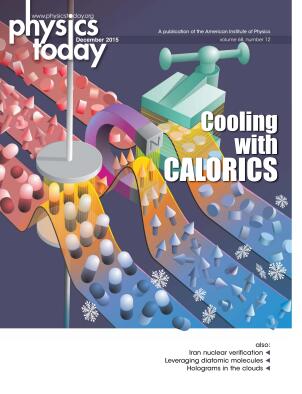Physics Nobel Prize honors the discovery of neutrino flavor oscillations
DOI: 10.1063/PT.3.3005
This year’s Nobel Prize in Physics goes to Takaaki Kajita and Arthur McDonald for their work on groundbreaking experiments that conclusively demonstrated that neutrinos oscillate among their three flavors—electron, muon, and tau. Kajita led the data analysis team of the Super-Kamiokande experiment, shown in figure 1a, when, in 1998, the collaboration clinched the case for oscillation of neutrinos created in Earth’s upper atmosphere. McDonald was the director of the Sudbury Neutrino Observatory (SNO), shown in figure 1b, which in 2001 and 2002 revealed the oscillation of neutrinos coming from the Sun.

Figure 1. With huge, subterranean detectors, the case for neutrino oscillation was made. (a) Super-Kamiokande used a cylindrical tank filled with 50 000 tons of ultrapure water. While the tank fills, team members travel by raft to clean and check the photomultiplier tubes on the tank’s perimeter. (b) The Sudbury Neutrino Observatory, or SNO, used a 12-meter-diameter acrylic sphere to hold 1000 tons of heavy water.
KAMIOKA OBSERVATORY, ICRR, UNIVERSITY OF TOKYO (Figure 1a). LAWRENCE BERKELEY NATIONAL LABORATORY (Figure 1b)
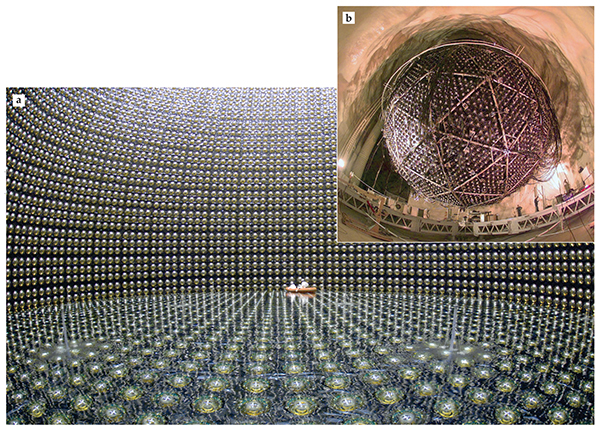
The discoveries resolved the mystery of several earlier experiments that detected neutrinos in unexpectedly small numbers. In fact, the neutrinos were rendering themselves invisible by transforming into a different flavor. The results also imply that neutrinos have mass: For neutrinos to change their flavor unprovoked, they must be superpositions of propagating states of different mass.
The solar problem
Detecting neutrinos at all is no mean feat. Although they’re more abundant than any other elementary particle apart from photons, neutrinos are immune to both the strong nuclear and electromagnetic forces. They’re detected via their weak interactions, which, as the name suggests, are feeble: There’s just a 10% chance that, during your lifetime, a passing neutrino will interact with an atom in your body.
To scrape together a usable signal, neutrino researchers construct their detectors from many tons of material, which they monitor for months or years for any telltale sign of a neutrino interaction. To cut down on background from cosmic rays, they typically bury the detectors deep underground, often in old mines. Neutrinos have no trouble penetrating the hundreds of meters of soil and rock, but the flux of other particles is attenuated.
In the early 1960s, theorist John Bahcall and experimenter Raymond Davis Jr teamed up to try to understand how many neutrinos were coming from the Sun. Bahcall developed a model that encompassed the various nuclear processes hosted by the Sun—from proton–proton fusion to reactions involving beryllium, boron, carbon, nitrogen, and oxygen—and estimated the number of neutrinos (all of them electron neutrinos) that each process should produce. Meanwhile, Davis devised and built a detector: a tank filled with 600 tons of tetrachloroethylene (C2Cl4) in the Homestake gold mine in South Dakota. An electron neutrino interacting with a chlorine nucleus could transform it into a nucleus of radioactive argon-37. Every few months, Davis extracted the 37Ar atoms from the tank and counted them. He found only one-third the number Bahcall had predicted.
That discrepancy would later be known as the solar-neutrino problem. Something was wrong with Bahcall’s model, Davis’s experiment, or physicists’ understanding of neutrinos. The first possibility seemed the most likely. (See Physics Today, March 1968, page 73
In the 1980s and 1990s, other experiments started detecting solar neutrinos in numbers that showed a similarly large shortfall relative to the model’s predictions. Among them was Kamiokande, the predecessor of Super-Kamiokande, located in the Kamioka Mining and Smelting Company’s Mozumi mine in Japan. Because Kamiokande had directional sensitivity, it confirmed that the neutrinos Davis had detected were indeed coming from the Sun. For their work, Davis and Kamiokande’s first spokesperson, Masatoshi Koshiba, each received a share of the 2002 Nobel Prize. (See Physics Today, December 2002, page 16
Because the new experiments used different materials for their detectors, they were sensitive to different combinations of the Sun’s neutrino-generating processes. The water-based Kamiokande detector, for example, could see only the rare highest-energy neutrinos created by beta decay of boron-8 nuclei. Gallium-based detectors and Davis’s C2Cl4 detector, on the other hand, had lower energy thresholds that admitted neutrinos from several processes.
If the problem with the solar model was that it had the wrong ratios between the rates for various solar processes—perhaps there was much less 8B in the Sun’s core than Bahcall had predicted—then the measurements from several detectors would have made it possible to work out what the correct ratios should be. However, it soon became clear that no amount of tweaking could produce a model compatible with all the experimental results: One or more of the solar processes would need to contribute a negative number of neutrinos to the total flux. Either the experiments were wrong or there was something strange about the physics of neutrinos. (See the article by John Bahcall, Frank Calaprice, Arthur McDonald, and Yoji Totsuka, Physics Today, July 1996, page 30
Super-Kamiokande
Kamiokande collected data not only on solar neutrinos, but also on atmospheric neutrinos, and there the researchers found another puzzle. Cosmic rays—high-energy protons and other charged particles—entering Earth’s stratosphere generate showers of pions, which decay into electrons, muons, and neutrinos. Despite the complexity of the decay chain, the process should always yield two muon neutrinos for every electron neutrino.
Atmospheric neutrinos, at one to several GeV, are orders of magnitude more energetic than solar neutrinos, which rarely exceed 10 MeV. At such high energies, Kamiokande could not only detect both the electron and muon flavors of neutrino—it could also tell them apart. A so-called water-Cherenkov detector such as Kamiokande registers a neutrino when it reacts with a nucleon or electron to yield a fast-moving charged lepton (an electron or muon or one of their antiparticles). The lepton, traveling faster than the speed of light in water, creates the optical equivalent of a sonic boom. The resulting ring of Cherenkov radiation is projected onto the wall of the water tank, where it’s picked up by photomultiplier tubes.
The shape of that ring reveals the neutrino’s flavor. Relatively heavy muons, created by muon neutrinos, fly straight, and they yield clean, crisp rings. The lighter electrons, created by electron neutrinos, get batted around, so their rings are fuzzier. Between 1987 and 1994, Kamiokande detected 200 atmospheric neutrinos, enough to reach a clear conclusion. Rather than the expected 2:1 ratio of muon neutrinos to electron neutrinos, the ratio was much closer to 1:1. (See Physics Today, October 1994, page 22
Solving the mystery in a reasonable amount of time would require a much larger detector—both to catch more neutrinos and to fully contain more of their Cherenkov tracks. Whereas the Kamiokande detector used 3000 tons of ultrapure water, its successor, Super-Kamiokande, located in the same mine, used 50 000 tons, contained in a cylindrical tank 40 meters wide and 40 meters tall. Under the leadership of Yoji Totsuka of the University of Tokyo, the Super-Kamiokande team grew into a collaboration of more than 100 researchers across Japan and the US.
The experiment was scheduled to begin in April 1996—in fact, the construction was completed slightly early. Chang Kee Jung of Stony Brook University, a member of the collaboration, recalls that Totsuka “waited until midnight on April 1st to push the button, so he could say he was ready on time.”
It didn’t take long for a pattern to emerge, as shown in figure 2: Electron neutrinos from all parts of the atmosphere were detected at equal rates, but the flux of muon neutrinos depended markedly on direction and energy. Neutrinos coming from directly overhead, having traveled just 15 km or so, appeared in approximately the expected 2:1 ratio. But for those coming up from below, which had been created on the far side of the world and had traveled thousands of kilometers through solid Earth, muon neutrinos appeared depleted relative to the electron neutrinos.

Figure 2. Atmospheric neutrinos with energies between 400 MeV and 1.3 GeV as detected by Super-Kamiokande, as a function of the angle θ measured from the local zenith. Data points and their error bars are shown in black, the blue blocks are the results of a Monte Carlo simulation that assumes no neutrino flavor oscillations, and the red stepped lines are the best fits of the data to a model that includes oscillations. Neutrinos coming from overhead (cos θ = 1) have little time to oscillate; for those coming up from below (cos θ = −1), the effect of oscillation is significant. (Adapted from ref.
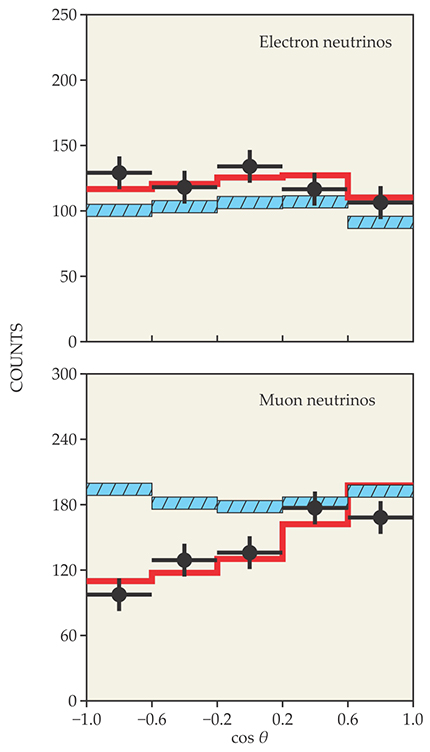
The missing muon neutrinos were, the researchers concluded, transforming into some undetectable species (now known to be tau neutrinos), and the farther they traveled, the greater the probability of transformation. That the transformation probability decreased as energy increased can be understood in terms of special relativity: As a particle approaches the speed of light, its internal clock runs more slowly.
Kajita, as the lead data analyst, presented the collaboration’s results to the public for the first time at the Neutrino ’98 conference. (See Physics Today, August 1998, page 17
In November 2001 Super-Kamiokande suffered a severe setback when an accident destroyed more than half of the detector’s photomultiplier tubes. (See Physics Today, January 2002, page 22.
SNO
Super-Kamiokande had shown that muon neutrinos could change their identities. That finding didn’t directly solve the solar-neutrino problem, because electron neutrinos—the kind produced by the Sun—weren’t observed to oscillate. But solar neutrinos travel much farther to reach Earth than atmospheric neutrinos do. Electron-neutrino oscillation along the way could still be responsible for the missing solar neutrinos.
In the mid 1980s, Herbert Chen proposed that a 1000-ton heavy-water detector could be ideally suited for studying solar neutrinos. Deuterons, or heavy-hydrogen nuclei, are rather loosely bound; it takes just 2.2 MeV to break one apart. A neutrino of any flavor, as long as it has sufficient energy, can split a deuteron into a proton and a neutron. Furthermore, an electron neutrino can react with a deuteron to yield two protons plus an electron. Those two mechanisms—called the neutral-current and charged-current interactions, respectively—allow the electron-neutrino flux and total neutrino flux to be measured independently by the same experiment.
Chen never saw his vision realized. After his untimely death in 1987, the project—the eventual SNO—was carried on by McDonald, George Ewan, David Sinclair, Hamish Robertson, and others in Canada, the UK, and the US.
Heavy water is plentiful in Canada, thanks to the country’s history with heavy-water-moderated nuclear reactors, but it doesn’t come cheap. The 1000 tons of it, worth $300 million, had to be borrowed from Atomic Energy of Canada, Ltd. Ewan had arranged for a 2-km-deep detector site in Creighton mine in Sudbury, Ontario, an active mine that produces a significant fraction of the world’s nickel.
Because the detector would be sensitive to relatively low energies, background levels had to be tightly controlled. A stray radioactive atom could emit a gamma ray with enough energy to split a deuteron and mimic a neutrino signal. To minimize that possibility, the researchers classified the entire detector chamber—which, at 22 m by 38 m, was the largest ever excavated at that depth—as a clean room. Among other precautions, no one could enter without first showering and changing clothes.
Data collection began in 1999. The charged-current interaction—sensitive to electron neutrinos but no other flavors—was straightforward to detect: The nascent electron carried off most of the incident neutrino’s energy, so it could be detected via its Cherenkov radiation.
2
(See Physics Today, August 2001, page 13
“So that our data analyzers weren’t biased by any preconceived result,” explains McDonald, “we blinded ourselves by not looking at part of the data set until our analysis criteria were fully defined.” When the researchers took the blinders off, they found that the flux of muon and tau neutrinos—that is, electron neutrinos that had changed flavor—was greater than zero with a statistical significance of more than five standard deviations. Says McDonald, “It was a real Eureka moment.”
The result, shown in figure 3, was an impressive confirmation of the solar model.
3
(See Physics Today, July 2002, page 13

Figure 3. Solar neutrinos as detected by the Sudbury Neutrino Observatory (SNO). The detector measured three distinct neutrino-interaction mechanisms. The charged-current interaction is sensitive only to electron neutrinos (νe), whereas the neutral-current interaction is sensitive to electron, muon, and tau neutrinos (νe, νμ, and ντ). The elastic-scatter mechanism, whereby a neutrino scatters off an electron, is sensitive to all neutrino flavors, but not equally. From the intersection of the three bands, one can infer the fluxes of electron and non-electron neutrinos; the dashed ovals represent error margins of one, two, and three standard deviations. The dashed lines are the maximum and minimum total flux predicted by the standard solar model. (Adapted from ref.
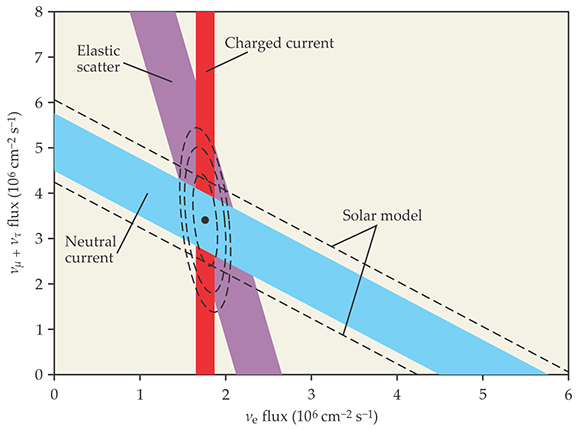
The SNO detector took its last data in 2006. “The heavy water was expensive to insure,” explains Robertson, “so we had to give it back.” But the mine continues to host several other international experiments that benefit from the low-radioactivity subterranean site. And plans are under way to refurbish the SNO equipment for a new 1000-ton neutrino detector, called SNO+, filled with linear alkyl benzene, an organic liquid scintillator, instead of heavy water.
Answers and questions
Subsequent experiments clarified the oscillation picture and its broader implications. The Kamioka liquid-scintillator antineutrino detector (KamLAND), which detects neutrinos originating from nuclear reactors around Japan, was the first to reveal an actual oscillatory signal: electron neutrinos disappearing and reappearing as a function of energy and distance. That result ruled out the possibility—which had always been considered unlikely—that neutrinos were not oscillating but rather irreversibly transforming.
It’s now known that each neutrino flavor can transform into each of the others (see Physics Today, May 2012, page 13
Where do those masses come from, and why are they so small? In the standard model of particle physics, mass arises via the Higgs mechanism (see Physics Today, September 2012, page 14
Every neutrino ever observed has been left-handed—that is, its momentum and spin are antiparallel—and has had a speed indistinguishable from the speed of light c. But because neutrinos are massive particles, their speed must be less than c. It’s therefore possible, at least theoretically, to catch up with a neutrino and overtake it, which would reverse its helicity from the observer’s point of view. (See the article by Alfred Goldhaber and Maurice Goldhaber, Physics Today, May 2011, page 40
So although right-handed neutrinos have never been seen, they must exist. Theoretical explanations abound. One, the so-called seesaw mechanism, postulates a fixed product of the left-handed and right-handed neutrino masses. Because left-handed neutrinos are much lighter than the other elementary particles, right-handed neutrinos would be much heavier—possibly too heavy to detect.
If the seesaw mechanism is correct, an intriguing consequence is that neutrinos must be Majorana particles—that is, their own antiparticles. Several experiments, including SNO+, seek to test that possibility by looking for neutrinoless double-beta decay (see Physics Today, January 2010, page 20
Neutrinoless double-beta decays, if they occur at all, represent at most a tiny fraction of the already rare double-beta decays. Observing them requires both a large quantity of the decaying isotope and a detector with excellent energy resolution for capturing the emitted electrons. If found, the decays provide a measurement of the absolute neutrino masses (the rate of neutrinoless events is related to the neutrino mass squared) and could also lead to an understanding of why the universe contains so much more matter than antimatter. (See the Quick Study by Rabi Mohapatra, Physics Today, April 2010, page 68
Valuable players
Nobel Prizes can’t be awarded posthumously, and they can’t be shared by more than three people. So Bahcall (1934–2005) and Totsuka (1942–2008) are necessarily excluded from this year’s honor, as are most of the many dozens of scientists who have contributed to Super-Kamiokande and SNO over the years. Jung contrasts the situation to a sports championship: “When a team wins the championship, the whole team shares the trophy,” he says. “But then there’s also an award for the most valuable player.”
Takaaki Kajita was born in 1959 in Higashimatsuyama, Saitama, Japan. He earned his undergraduate degree from Saitama University in 1981 and his PhD from the University of Tokyo in 1986. He has been affiliated with the University of Tokyo ever since, where he worked on both the Kamiokande and Super-Kamiokande experiments. In 1999 he became the director of the Center for Cosmic Neutrinos at the Institute for Cosmic Ray Research. Since 2008 he has been director for the entire institute, which oversees Super-Kamiokande and several other experiments.

Kajita
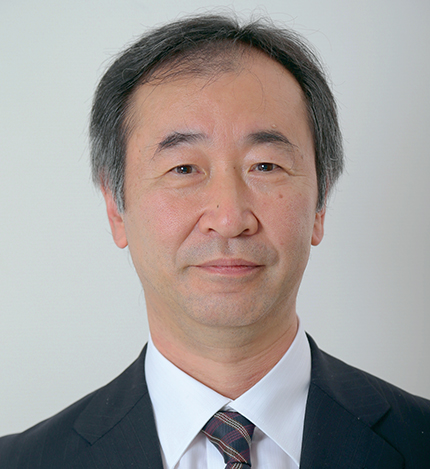
Arthur McDonald was born in 1943 in Sydney, Nova Scotia, Canada. After obtaining bachelor’s and master’s degrees from Dalhousie University in Nova Scotia, he earned his doctoral degree in physics from Caltech in 1969. From 1970 until 1982 he worked as a research officer at Chalk River Nuclear Laboratories in Ontario. After seven years on the faculty at Princeton University, he moved to Queen’s University in Kingston, Ontario. He has been director of the SNO collaboration since 1989.

McDonald
SNOLAB
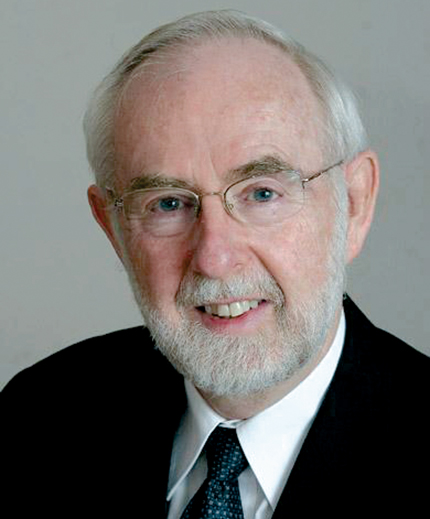
References
1. Y. Fukuda et al., Phys. Rev. Lett. 81, 1562 (1998). https://doi.org/10.1103/PhysRevLett.81.1562
2. Q. R. Ahmad et al., Phys. Rev. Lett. 87, 071301 (2001). https://doi.org/10.1103/PhysRevLett.87.071301
3. Q. R. Ahmad et al. et al., Phys. Rev. Lett. 89, 011301 (2002).https://doi.org/10.1103/PhysRevLett.89.011301
